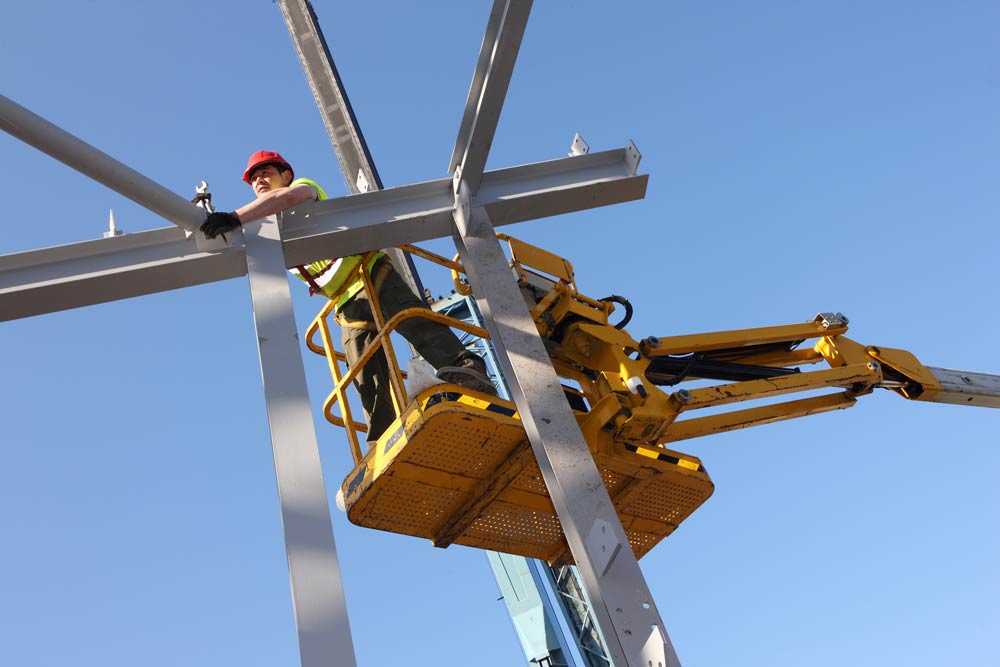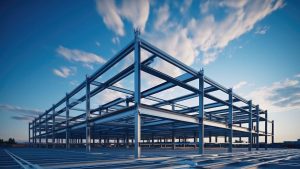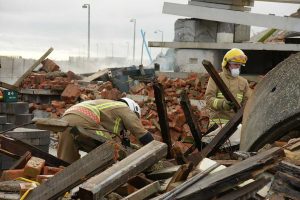Steel is one of the most commonly used materials in construction, with a variety of applications in modern architecture. Its use in construction dates back to the 19th century, and it has remained a popular choice due to its unique properties.
Steel is a versatile material that can be easily fabricated, cut and welded into different shapes, making it suitable for a wide range of construction projects. It is also known for its strength, durability and ductility, making it an ideal material for structures that require resilience and longevity.
In addition to its physical properties, steel is also a sustainable material for construction. With a high recyclability rate, steel is an environmentally friendly option for builders and architects.
Steel is also a material that can be produced domestically, reducing the need for international shipping and transportation, which can reduce carbon emissions. As a result, the use of steel in construction not only benefits the builders and owners but also the environment.
Properties of Steel
Steel has a unique combination of properties that make it an ideal material for construction. Its strength is unmatched, making it resistant to compression and tension forces. Steel is also highly durable and can withstand harsh weather conditions and extreme temperatures, which makes it suitable for use in a variety of settings.
Its ductility allows it to be easily formed into various shapes, and it can also be easily cut and welded to meet specific construction needs. Furthermore, steel has a high recyclability rate, which makes it an environmentally friendly material for construction.
Steel’s unique properties allow for more creative and efficient designs in modern architecture. Steel is used in many iconic structures worldwide, such as the Eiffel Tower in Paris and the Burj Khalifa in Dubai.
These structures would not have been possible without the unique properties of steel, which enabled architects to design taller, more intricate, and more awe-inspiring buildings. The ability to use steel in such designs demonstrates its versatility, and its continued use in modern architecture ensures that it will remain a vital material for years to come.
Uses of Steel in Construction
Steel is used in various ways in construction, ranging from structural frames to cladding and roofing. Structural frames made of steel are known for their strength and durability, and they are often used in high-rise buildings, bridges and other large structures.
Steel roofing and cladding are also popular in construction, as they are lightweight and easy to install. Steel reinforcement is commonly used in concrete construction, providing added strength to structures. Steel can also be used in the construction of pipelines, as it is resistant to corrosion and can withstand high pressure.
In recent years, steel has also become increasingly popular in residential construction. Steel-framed houses are quick to assemble and can be customized to meet the needs of the homeowner. Additionally, the use of steel in residential construction can reduce the risk of damage from natural disasters, such as earthquakes and hurricanes.
The versatility of steel in construction means that it can be used in a wide range of projects, from large commercial buildings to small residential homes.
Advantages of Using Steel in Construction
One of the main advantages of using steel in construction is its cost-effectiveness. Steel is relatively affordable compared to other materials, and it is readily available, making it a popular choice for construction projects. Its ease of installation is also a significant advantage, as it requires less time and labour compared to other construction materials.
Steel structures are also highly durable and require minimal maintenance, which reduces the overall cost of construction. Furthermore, steel is a sustainable material, with a high recyclability rate, making it an environmentally friendly option.
Steel structures also have a long lifespan, which is a significant advantage in construction. Steel can withstand extreme weather conditions and natural disasters, making it a more reliable material for buildings that require durability and longevity.
This makes it an ideal material for buildings that are expected to have a long lifespan, such as bridges, skyscrapers, and stadiums. Additionally, steel structures can be easily disassembled and recycled, which reduces the environmental impact of demolition and disposal.
Another advantage of using steel buildings is their flexibility. Steel structures can be easily modified or expanded to accommodate changes in the building’s function or design.
This is particularly useful for commercial buildings that may require additional space in the future or for residential homes that may need to be modified to accommodate a growing family. The flexibility of steel also allows for innovative design solutions that would not be possible with other materials.
Maintenance and Preservation of Steel in Construction
To ensure the longevity of steel structures, regular inspection and maintenance are essential. The structure should be inspected for signs of corrosion and other damage, and any necessary repairs should be carried out promptly.
Additionally, applying a protective coating to the surface of the steel can help to prevent corrosion and prolong the lifespan of the structure. Proper drainage and ventilation can also help to reduce the risk of corrosion.
Preserving the structural integrity of steel also requires appropriate design and construction techniques. Steel structures should be designed to resist the effects of corrosion and fire, and appropriate fireproofing measures should be taken. Proper installation and anchorage of steel components are also essential to ensure the stability and safety of the structure.
Conclusion
In conclusion, steel is a versatile and reliable material that has been used in construction for over a century. Its unique properties make it an ideal choice for a wide range of construction projects, including structural frames, roofing, reinforcement, and cladding.
While it has its disadvantages, such as its susceptibility to corrosion and fire, the advantages of using steel in construction outweigh the disadvantages. With proper maintenance and preservation, steel structures can be durable, cost-effective, and sustainable, making them an ideal choice for modern construction.
As architecture continues to evolve, steel will undoubtedly remain a vital material in the construction industry.
If you are interested in a quote on our steel building services, get in touch with us today.




